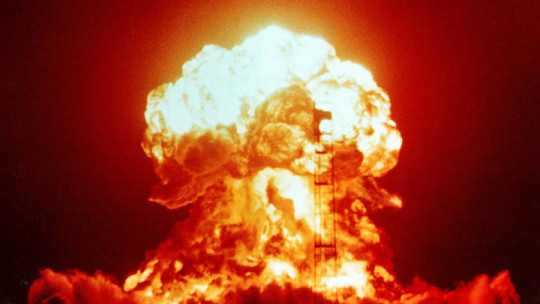
Atomosophobia is a clear example that human beings can develop extreme fears of very improbable phenomena. This mental alteration is based on the fear of atomic explosions, something that the vast majority of the population has never experienced or will experience.
Let’s see What are the symptoms and causes of atomosophobia? as well as the possible psychological treatments associated with this disorder.
What is atomosophobia?
Atomosophobia, or phobia of nuclear explosions, is a type of anxiety disorder belonging to the group of specific phobias.
In it, what produces a intense fear is the expectation that a nuclear explosion will occur in a nearby place. This means that the symptoms of the disorder do not manifest themselves only if one of these explosions is witnessed, but can appear in practically any context, as long as the intrusive ideas related to this type of catastrophe become the focus of the patient’s attention. person.
It must be taken into account that phobias are disorders because in them there is a fear of something that should not be feared with that intensity, since it does not pose a danger. In the case of nuclear explosions it is clear that they are dangerous, but in this case the problem is a matter of probability: what should not be feared is the risk of an imminent and nearby nuclear explosion, since it is most likely that is not going to occur.
Causes
As with the rest of the phobias, there is no specific and unique cause that is the same in all cases, but rather there are a variety of situations that can lead to the development of these disorders and cause their symptoms to persist.
Exposure to a traumatic experience related to real or imagined nuclear explosions is one of the causes. This association between the experience and an emotional state of strong anxiety can be made in the most elaborate ways.
For example, by experiencing the collapse of a house up close, which is similar to the explosion of a bomb, or by seeing someone you love die of cancer, in which case the most anxiety-inducing element of the nuclear explosion would be the radiation that would be left behind. in its path.
It must be taken into account that phobias are based on mechanics of fear and anxiety that In most cases they are useful for survival but in certain cases they can degenerate and give way to psychopathology.
This means that these anxiety disorders are not something that can be controlled through rationality, but rather they are based on the emotional facet that has been at the core of the functioning of the nervous system for millions of years and without whose existence we would not be able to understand the human mind.
Symptoms
As far as the symptoms are concerned, these are the usual ones in any type of phobia, and they all have to do with a strong anxiety response to a real or imagined stimulus.
On the one hand there are physiological symptoms These are increased blood pressure and respiratory rate, tremors, cold sweats, nausea, and the possibility of losing consciousness.
On the other hand, there is the psychological component, in which obsessive ideas based on the image of the nuclear explosion stand out, and the inability to direct attention to anything else while the crisis lasts, as well as the feeling of fear.
Finally we have the purely behavioral part, in which the behaviors of escape and avoidance of the phobic stimulus stand out.
Treatment
Fortunately, phobias have a good prognosis if they are treated with the help of psychological professionals.
In this sense, the most common techniques to treat this type of disorder in which we find atomosophobia are systematic desensitization and exposure. Both are based on the idea of exposing the person to the phobic stimulus in a controlled situation, under the supervision of the psychotherapist, and going from the easiest situations to face to the most difficult ones.
In the case of atomosophobia, since it is not possible to find the phobic stimulus in real life, the most useful thing is take advantage of forms of virtual reality based on a three-dimensional graphics engine.
On the other hand, in parallel, methods of psychological intervention that appeal to the cognitive component and mental schemas can be used. To do this, cognitive restructuring is used, linked in this case to improving self-esteem and self-efficacy.








